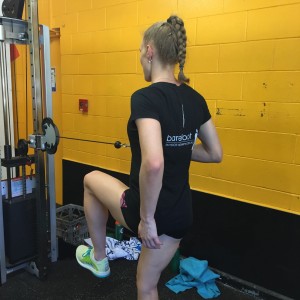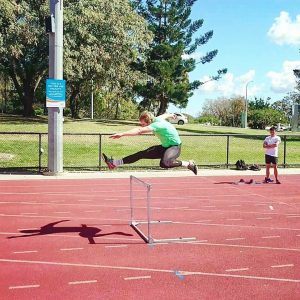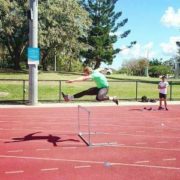Archive for month: March, 2017
Knee ligaments and injury
in Case Study TreatmentThe knee is vital for everyday functions, yet it is often poorly understood. There are many misconceptions about what is ‘good’ or ‘bad’ for knees and exactly what is going on inside the joint.
The knee is identified as a hinge joint, meaning it primarily moves in one direction (ie bending and straightening). It is made up of the femur (thigh bone), tibia (shin bone) and patella (knee cap). These bones are all held in place by a number of ligaments. The ‘joint surfaces’ (parts of the bone that glide on one another) are covered in articular cartilage to absorb shock and reduce friction in the joint. The joint capsule and ligaments serve to provide stability to the knee, whilst allowing it the necessary movement.

The main knee ligaments are summarised below:
- Medial collateral ligament: sits outside the joint capsule and runs between the tibia and femur (inside of the leg) to provide resistance to forces pushing the knee inwards
- Lateral collateral ligament: sits outside the joint capsule and runs between the tibia and femur (outside of the leg) to provide resistance to forces pushing the knee outwards
- Anterior cruciate ligament (ACL): is within the knee joint and runs from the front of the tibia to the back of the femur
- Posterior cruciate ligament (PCL): runs from the front of the femur to the back of the tibia (also within the joint)
- Patellar ligament: sits outside the joint capsule and runs from the patella (kneecap) to the front of the shin
The meniscus is another key structure in the knee joint. It is a fibrocartilaginous disc that sits between the tibia and femur to help absorb shock and improve load-bearing of the knee (twisting and stretching).
Common knee injuries
While we see a lot of pain that is a result of a build-up of accumulated strain, there are also a number of injuries that are caused by sudden trauma. These can include a rugby tackle, poor landing in netball, falling over skiing and even your form during rock climbing.

While accumulative strain injuries are usually the result of tight or weak muscles and stiff joints, traumatic injuries may involve structural damage to the knee joint.
Stay tuned for next weeks blog post, where we will discuss common knee injures, what causes them and most importantly, how to treat them.
If you would like to learn more, or visit one of our physio’s click here!
Training, perseverance and knowledge!
in Barefooter StoriesEver wondered what the training regime was like for an athlete? We recently sat down with Nick Fadden to hear about his training regime and what he does to ensure his body is able to perform at the highest level.
 Interview with Nick Fadden:
Interview with Nick Fadden:
Q: You have previously competed in 800m, 400m and 400m hurdles but have recently made the switch to the decathlon, competing in 10 events over 2 days. Tell us what your training schedule looks like and what inspired you to change events.
A: My training schedule is a bit of a funny one with work. My day starts with a 7am gym session 3-4 times a week. This incorporates programs that work my entire body due to such a variety in my events. I will try and squeeze in a quick 5-7km run at lunch time every day, I like to keep the pace for the overall run below 4min per km, it help flush my legs from gym in the morning. In the afternoon I have two track sessions during the work week and one on the weekend, so Monday will be my toughest session for the week with heavy lactic session – long reps up around 300-400m per rep at a high intensity. Wednesday will generally be my speed session for the week and can be 60m -200m reps looking to really sit at the 90-95% effort range (favourite session because it’s shorter). Wednesday usually includes hurdles depending on how the legs are feeling. Tuesday is plyometrics, shot put and high jump, I can be at training until 9pm if I really working on particular aspects of shot put or high jump. Thursday is pole vault and long jump with another long run. I like to do it in an interval fashion that my mate showed me: 90secs on 60 off, 60 on 30 off, 30 on 15 off 15 on etc. It’s great for my technique do this. I get Friday off track so I love to go rock climbing as a bit of cross training with a quick plyometric session. Saturday is my biggest day with high jump, shot put, javelin, discus, pole vault, and my last track session which is a longer one. My bread and butter (training involves) either 10x200m or 10x400m, they are all about maintaining my pace through the entire set. Sunday is a long jog and my day to go do some more adventurous sports.
So welcome to my silly training week!
Q: What lead you to switch to Decathalon?
A: My inspiration to do the switch to decathlon was my good friend and training partner Cedric Dubler and coach, Eric. After watching Cedric qualify for the Rio Olympics I thought it’d be fun to switch up what I was doing and my coach thought Cedric would need more training partners for all of the events.

Q: Outside of athletics, you are regularly chasing adrenaline in some other way. Tell us more about your other favourite activities and why you’re passionate about them.
A: My favourite sports outside of athletics would have to be climbing, white-water kayaking, snow skiing, surfing, wake boarding, sailing and cycling (road and MTB). Each of these give me new challenges and an escape from normal training and work. With such a busy training schedule I’m always looking for something different which I can go to new places to experiences. I get to meet lots people who are passionate about the same sports and guidance on how to really get the most out of each of the sports.
Q: You are almost finished studying your musculoskeletal therapy degree – how does this help you take care of your body with all the full-on activities you put it through?
A: Having learnt about the body it has allowed me to understand when my body has had enough and how to make the most of it when I’m training (although I still push it to its limits). I’ve learnt how to increase my range of movements and decrease any restrictions that I may have from prior injuries and from training. This allows me to do such a different range of activities. From studying this degree it allows me to understand and appreciate the treatment, advice and homework I get from sessions with Barefoot Physiotherapy and other health practitioners I see.
If you would like to learn more or book in an appointment with one of our physio’s click here!

Acknowledgement of Country
Barefoot Physiotherapy proudly operates on Jagera and Turrbul land. We acknowledge Traditional Owners of Country throughout Australia and recognise the continuing connection to lands, waters and communities.
We pay our respect to their Elders past and present and extend that respect to all Aboriginal and Torres Strait Islander peoples today.




